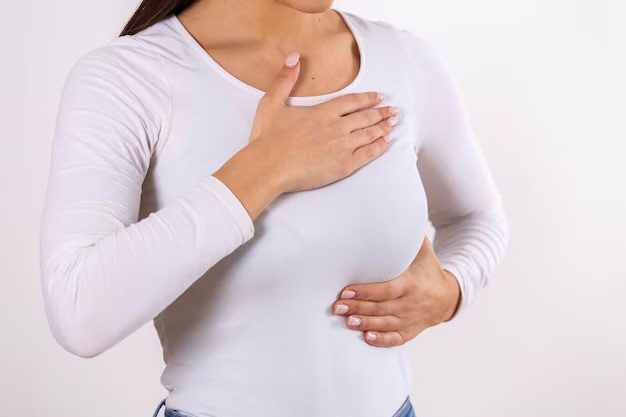This content is for informational and educational purposes only. Always consult a qualified healthcare provider.
Last Updated on September 6, 2024 by Grace Oluchi
According to the World Health Organization (WHO) it was recorded that in the year 2022 that 670 0000 women died of breast cancer globally out of 2.3 million that were diagnosed. A new lump or thickening in the breast or underarm area has been linked to a significant sign of breast cancer.
But does a lump in the breast automatically mean that you have breast cancer?
When a person discovers that they have a lump in their breast, the automatic response will be to start freaking out. And then become scared in the fear of having breast cancer. Though, a lump in the breast can be a sign of breast cancer, it doesn’t always mean that you have cancer. A breast lump can also mean that you have cyst, pseudo-lumps, mastitis and other conditions.
📋 Table of Contents
Meaning of a lump in the breast


A lump can mean different things, including breast cancer, but there are other factors to consider before concluding. Many breast lumps are benign (non-cancerous). However it is crucial to get any new breast lump evaluated by your doctor to determine the cause.
A breast lump can be a sign of the following things
Cysts
Breast cysts are are fluid-filled sacs that can develop in the breast tissue. They are usually benign and may come and go during your menstrual cycle. Additionally, breast cysts can sometimes cause pain, and tenderness in your breast. However, you can try some home remedies to relive the pain such as, over the counter medication, warm compresses and wearing a supportive bra.
Breast infection (mastitis)
Mastitis is an infection of the breast tissue that can lead to redness, pain, inflammation, and a lump in the breast. It’s common amongst breastfeeding mothers due to milk duct blockage or bacteria entering the breast tissue.
Pseudo-lumps
Pseudo lumps are non-cancerous breast changes that can mimic the feel of a lump but aren’t actual lumps. In most cases, they can be related to conditions like fibrocystic changes, fibroadenomas, or even breast infections.
Fat necrosis
This is a condition where the fatty tissue in the breast is damaged which leads to the formation of scar tissue, and a lump. It is a condition that can be caused by trauma in the breast such as injury or surgery. Fat necrosis lumps can sometimes be mistaken for cancerous lumps, so it’s not always breast cancer. However, you should always check in with a health professional to understand the intensity of things.
Fibroadenomas
A fibroadenomas is a small benign breast tumor made up of glandular, and connective tissues. They are small, firm, and usually painless bump. Fibroadenomas are common especially in younger women, and in most cases they are not linked to breast cancer.
Fibrocystic changes
This condition involves non-cancerous changes in breast tissue, which often causes lumps that can be tender, and fluctuating in size. However, these changes are not common, and not linked to an increased risk of breast cancer. So, if you notice something like this in your breast, don’t freak out, and start imagining the worst. Instead, try stay calm, and pay a short visit to your doctor, to get a better understanding of the situation.
What to do when you discover a breast lump
If you discover that you have a lump in your breast, it’s important to not freak out, I know I’ve said this like a million times. But seriously don’t freak out. Seeing that breast lumps can mean a lot of things you can try waiting it out for a week to see if anything changes. Also, check out for pains around the lump area, if it’s too intense you should go to the hospital quickly. Painful lumps do exist, but when it’s out of control, to the point it interferes with your life, go to the hospital on time. Additionally, if the lump comes with:
- changes in your breast size
- nipple discharge
- swelling of your breast and underarm
- pain or tenderness
- change in the feel of your breast tissue (e.g becoming firmer or denser)
- Peeling or flaking of the skin
- A change in the way your breast moves
It may mean that something is wrong somewhere, and you have to get medical help quickly.
That said, you must understand that many breast changes are not cancerous, and some breast cancers may not show any signs. It’s just better to be on the safe side and undergo regular clinical exams and screening mammograms. They can help detect breast cancer early, when it’s most treatable. Even you can practice breast self-exams at home or anywhere you are, as regularly as possible.
You’ll find these helpful as well
Gestational diabetes : Symptoms, risk, complications, treatments
Vitamin B12 Deficiency Signs Every Diabetic Must Know
Skin rash: Types of skin rash, Causes, Symptoms, Treatment.
High blood pressure 101: Everything you need to know.

